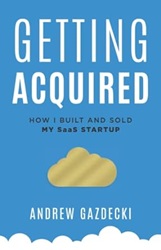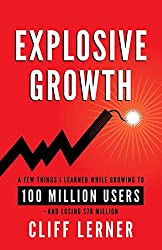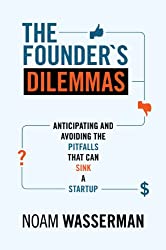
Rating: 7.6/10.
Getting Acquired: How I Built and Sold My SaaS Startup by Andrew Gazdecki
Book written by a founder and serial entrepreneur of several SaaS startups, details his journey in the first half of the book, how he built and eventually sold Bizness Apps. In his college years, the author was already deeply involved in business; his startup originated during this period in 2009, in the early days of the App Store. At that time, many small businesses lacked the resources to develop their mobile apps; hence, he created one of the first products in its category: an app builder that enabled businesses to build apps without needing to code.
He reached out to numerous local businesses to secure the first sales and revenue, and even won an entrepreneurship contest. After delivering a compelling demo, the app was frequently featured on TechCrunch, leading to steady growth. They devised an ingenious distribution strategy; rather than selling to many small businesses individually, which was quite slow, they adopted a white label approach. This allowed resellers, such as SEO agencies, to market the product and earn a commission, which was effective since these businesses often provided various technological services to small businesses.
The team relocated to San Francisco, attracted by the higher quality of developers there; previously, their MVP had been developed using international contractors who proved to be less reliable. Throughout their journey, they raised only a small amount of money, choosing to avoid VC funding and focusing almost entirely on bootstrapping to profitability. However, they soon found San Francisco too costly in terms of rent and salaries, moving again to San Diego.
The company faced a crisis when Apple decided to remove all of its apps from the App Store, a move that nearly destroyed the business. Fortunately, they managed to negotiate an agreement, and Apple eventually reversed its decision. Shortly after resolving this issue, the author decided to sell the company, earning several million dollars as a reward. He then went on to start a few other companies, some of which are still in development.
In the second half of the book, the author presents numerous short chapters offering advice on various aspects of entrepreneurship. He advocates for bootstrapping and prioritizing customer satisfaction as key to building a much stronger business, in contrast to relying on VC funding. While VC funds can spur rapid growth, he warns that this often shifts focus towards demonstrating growth rather than truly satisfying customers. Regarding competition, he advises building a strong brand reputation and striving to be the best in your category. It’s important to stay positive and not focusing on competitors’ negatives in pitches, as this can come off as negative, instead maintain a focus on what success means for your customers. The book also includes several chapters on the procedural, accounting, and legal intricacies of selling a company. These cover topics such as the due diligence process and methods of seller financing, which I mostly skipped.



